The future of outdoor adventure with AI technology
As artificial intelligence (AI) continues to make waves across every industry imaginable, the kayaking world is no exception. We combed through the latest news, talked with outdoor enthusiasts, created AI generated kayaking photography, and chatted with – you guessed it – Chat GPT4 Pro and the newly-released Microsoft Edge Bing Chat, to dig deeper into our future in the outdoor industry with AI technology.
Read on to learn about the potential of AI tech in redefining outdoor recreation and the challenges and limitations that come with this revolutionary tech adoption in the paddling industry…
This website may contain affiliate links meaning if you purchase through my link, I’ll receive a small commission at no cost to you.
AI and kayakers
Recreational kayaking is a popular outdoor activity that offers a range of experiences, from leisurely paddles on calm lakes to more challenging excursions on rivers.
Let’s break down the challenges paddlers might face, and how artificial technology can potentially benefit kayakers and the outdoor industry in general…
What challenges do kayakers face?
We’ve heard your pain points, paddlers. Here are some of the challenges our kayaking community has shared with us… but can AI help solve them?
Finding suitable locations
Flatwater kayakers often struggle to find suitable locations for paddling, particularly in unfamiliar areas.
Unpredictable weather and water conditions
Unexpected changes in weather or water conditions can negatively impact a kayaker's experience (and be extremely dangerous).
Skill development and training
Improving paddling technique and efficiency is essential for flatwater kayakers, at all skill levels, to stay strong, knowledgeable, and safe.
Navigation and route planning
Kayakers may struggle with navigating unfamiliar waters and planning optimal routes.
How AI is changing the game for the outdoor industry
AI is already here, and it’s moving fast. Advanced AI has the potential to significantly change the way we kayak (and enjoy outdoor sports, fitness, and recreation in general) by enhancing safety, personalization, performance analysis, route planning, and customer engagement.
By leveraging AI technology, the kayaking community can potentially solve these challenges and create safer, more enjoyable experiences for paddlers of all skill levels.
But could AI power up effective solutions? GPT4 seems to think so.
Let’s break it down further.
Enhanced outdoor safety
AI can analyze real-time data, such as weather conditions, water levels, and currents, to provide accurate and up-to-date information on conditions, helping kayakers plan their trips more effectively and safely.
For example, a smart kayak design equipped with artificial intelligence technology could alert paddlers of sudden changes of weather (like an incoming storm) or potential water hazards, supporting a safer kayaking experience.
Emergency response
Flatwater kayaking carries inherent risks. Some of these include capsizing your boat, getting lost on the water, or encountering medical emergencies. AI-powered wearables and devices can detect irregularities in a kayaker's heart rate and send alerts to the user or emergency contacts. Or, in my case as I’m allergic to bees, potentially send out an alert if I’m having an allergic reaction to a bee sting and need urgent medical care.
Conservation and environmental stewardship
AI-powered apps and platforms can help kayakers become more aware of their impact on the environment and promote responsible practices. For example, AI can analyze user data to provide tips on minimizing ecological footprint, adhering to Leave No Trace principles, or even contributing to local conservation projects. We’ll get into this more in a section below.
Route personalization and navigation
AI can potentially help by analyzing geographical data, user preferences, and online reviews to recommend ideal flat water kayaking spots based on factors like scenery, accessibility, and water conditions.
One benefit of AI that no one can argue? It can analyze vast amounts of data, and incredibly fast. AI can crawl geographical and environmental data and create optimal routes for recreational and sport kayakers. And by considering important factors like paddling distance, kayaking difficulty, and various natural points of interest, AI can recommend tailored routes that cater to individual paddling preferences.
Wondering where a beginner flatwater kayaker can safely paddle, from an easy public launch point, that will provide a great mountain view in the state of Idaho? Yeah, us too. AI can scrape the web and help you out – and literally provide an in-depth answer with source citations, faster than you can let your dog out. But there’s caveats involved here where a human experience provides important nuance (we’ll get to that later in this article!).
Additionally, AI-powered navigation systems can guide flatwater kayakers through unfamiliar waters, making it easier to explore new areas - potentially even when you’re off the grid.
And by the way, the answer to that Pacific Northwest question? Chat GPT4 says the top spot is Redfish Lake. It’s located in the Sawtooth National Recreation Area, where there’s a beautiful calm alpine lake and a breathtaking views of the Sawtooth Mountains. I cannot confirm from personal experience.
Accessible learning resources
AI can help beginners learn the basics of flatwater kayaking through interactive, adaptive learning platforms.
AI-powered coaching systems can provide real-time feedback on stroke technique, posture, and speed, allowing kayakers to refine their skills and improve their performance on the water. These tools can provide step-by-step guidance, monitor progress, and offer personalized feedback, making it easier for newcomers to build their skills and confidence.
Athlete performance analysis
AI-powered wearables and kayak sensors can track and analyze data on a kayaker's performance, such as stroke efficiency, speed, active calories burned, and heart rate. If shared, this data can be used by artificial technology to provide custom feedback and fitness training suggestions, which in theory can allow kayakers to improve their skills and achieve their goals more effectively.
Social interaction and community building
AI-powered platforms can help kayakers connect with like-minded enthusiasts by recommending local groups, events, or meetups. This can foster a sense of community, encouraging more people to engage in the sport and share their experiences. At Flatwater Kayak Club, we love that this is a real viable AI solution for lonely, inexperienced, or marginalized kayakers.
Data sharing advancements
AI can facilitate the sharing of valuable information among kayakers, researchers, and organizations. There are many use cases for this (as well as major privacy questions). For instance, data collected by AI-powered devices can be used to monitor water quality, wildlife populations, or environmental changes, contributing to a better understanding of ecosystems and the impacts of human activities.
This is one of our copyright-owned, real flat water kayaking outdoor experience images. How will AI generated photos change the game in the outdoor world? How will artificially generated images communicate (or hinder) safety, accuracy of gear usage, river scouting, and more? There are a lot of unanswered questions…
Customer engagement
For paddle shops and other outdoor businesses, artificial intelligence can be used to analyze customer behavior, preferences, and feedback to create targeted marketing campaigns and improve customer satisfaction and experiences. For example, a kayaking tour company could use AI to identify popular routes or activities and create special offers or promotions based on this data. This approach is already here in some ways (hello, personalized marketing ads) and engagement opportunities with artificial intelligence are growing for businesses and customers everyday.
Summary
If used ethically and appropriately, AI can support the outdoor industry by supporting safer custom experiences, offering personalized route recommendations, analyzing kayaker fitness and performance, optimizing route planning, and enhancing customer experiences.
By understanding the potential of AI technology in flatwater kayaking, we can envision a future where kayaking experiences are safer, more custom, and environmentally responsible. This can help foster a stronger sense of community among enthusiasts, encourage more people to engage in the sport, and contribute to the overall well-being of aquatic ecosystems.
To keep in spirit with this AI and kayaking topic, we also tried another AI generating platform, called Fotor. This is a free online AI image generator. With it’s text-to-image AI, we typed “woman wearing life jacket paddling a kayak on calm water” into the field, selected photography as an option, and clicked generate. What do you think of the AI photo result? Will authentic outdoor photography be more crucial – or less of a value in this new world of AI – in the future?
Current AI applications for kayakers
Several AI applications and technologies are already available to support recreational kayakers and outdoor enthusiasts. More are created and shared everyday. Have you tried any of these? Do you have others you’d recommend? Let us know in the comments!
Here's an overview of some popular AI solutions:
Paddle Logger kayaking session tracking: This app uses AI to track and analyze kayaking sessions. It records information such as distance, speed, and duration, allowing kayakers to monitor their performance and progress over time. It also includes safety features, like a delay-start timer and automatic alerts for emergency contacts if the user is in distress.
Weather and water condition apps: AI-powered weather apps, like Windy and MyRadar, provide kayakers with up-to-date information on wind, temperature, and precipitation. Additionally, river level and flow monitoring apps, such as RiverApp, use AI to predict water conditions, helping kayakers choose the right time and place for their outings.
Route planning and navigation apps: AI-powered route planning and navigation apps, like Google Maps and Navionics, offer kayakers detailed maps, route suggestions, and real-time navigation assistance. Some of these apps also provide information on points of interest, such as marinas, fuel stations, wildlife observations, and scenic spots, to enhance the overall experience.
Wearable high-tech devices: AI-enabled wearables, like smartwatches and fitness trackers, can monitor kayakers' biometric data, such as heart rate, calories burned, and stroke efficiency. These devices can provide real-time feedback and personalized suggestions to help users improve their performance and reach their goals. (I wear my Apple iWatch everyday, and I track my fitness workouts – including paddling – to improve my overall fitness (calorie counting, heart health) to help me achieve my goals).
Virtual coaching tech solutions: AI-powered coaching platforms, like Motionize, use sensors attached to the kayak and paddle to provide real-time feedback on stroke technique, efficiency, and speed. The system's AI analyzes the data and offers tips for improvement, enabling kayakers to refine their paddling skills.
These AI solutions can provide a solid foundation for recreational kayakers looking to improve their skills, safety, and overall experience. As AI continues to advance, it's guaranteed that even more innovative options will emerge to support the kayaking community.
AI technology and conservation
At Flatwater Kayak Club, supporting conservation of our beautiful natural environment is a core pillar of our organization. We deeply care about our rivers, lakes, water resources, and wildlife. But what about the impacts of climate change, irresponsible land and water use, pollution and more of the challenges facing conservation – how can AI help?
Here are some things we learned in our research…
7 ways AI can help protect the environment
Monitoring water quality
AI-powered systems can analyze data from sensors placed in rivers and lakes to monitor water quality parameters, such as temperature, pH, dissolved oxygen, and pollutants. This information can help authorities identify pollution sources, take corrective measures, and track the effectiveness of conservation efforts. Ahem - we know how many of you are searching for “Willamette River turbidity” out there.
Predictive modeling
AI can analyze historical data, weather patterns, and other factors to predict future water levels, flow rates, and water quality. These predictions can be useful in guiding conservation strategies, flood management, and allocating water resources.
Habitat assessment and restoration
Remember how we mentioned that AI is awesome for analyzing tons of information? It can help here too – AI can process data from satellite imagery, aerial photos, and on-site observations to identify changes in riparian habitats, erosion patterns, and vegetation health. This information can help in planning and prioritizing habitat restoration projects and monitoring their success.
Invasive species detection and control
AI algorithms can analyze images and data to identify and track invasive species in rivers and lakes. Early detection can help in implementing control measures before the invasive species cause significant harm to the ecosystem. Go away, lionfish.
Citizen science and community engagement
AI can assist in organizing and analyzing data collected by citizen scientists, making it easier for communities to participate in conservation efforts. For example, AI-powered apps can help users identify and report pollution sources, track wildlife sightings, or monitor water quality, contributing valuable data to support conservation initiatives.
Efficient resource management
AI can optimize the use of resources in conservation projects by analyzing data on funding, personnel, and equipment. This can help organizations prioritize projects, allocate resources more effectively, and maximize the impact of their efforts.
Sustainable travel planning
AI algorithms can help outdoor enthusiasts plan eco-friendly trips by analyzing factors like carbon footprint, local environmental impacts, and sustainable accommodations. This enables users to minimize their environmental impact while still enjoying outdoor activities and observing wildlife.
Summary
AI can't stop climate change alone, but it can help mitigate its effects by optimizing renewable energy systems, predicting and adapting to extreme weather events, enhancing resource efficiency, and guiding sustainable practices.
And by leveraging revolutionary AI technology, outdoor enthusiasts can better understand, adapt to, and mitigate the impacts of climate change and human activity on our planet. If we do AI right, we can contribute to more responsible and sustainable engagement with the natural environment while promoting a safer and more enjoyable paddling experience for all.
Outdoor brands using AI
Countless outdoor brand companies are already leveraging artificial intelligence to improve their products, services, and customer experiences – but here are some examples, according to the trained, premium (for pay) Chat GPT4 personal AI assistant we interacted with today:
The North Face
In collaboration with IBM Watson, The North Face developed an AI-powered online shopping assistant that provides personalized product recommendations based on user input about their specific needs and intended activities.
GoPro
GoPro, known for its action cameras, uses AI and machine learning for video editing through its Quik app. The app can analyze video footage, automatically identifying the best moments and creating a highlight reel set to music.
Adidas
Adidas uses AI and machine learning in various aspects of their business, from product design to supply chain management. One example is their Speedfactory, where AI is used to analyze data and optimize the manufacturing process for their athletic footwear.
Arc'teryx
Arc'teryx utilizes AI and computer vision technology to improve the design and manufacturing process for their outdoor apparel. By analyzing patterns and materials, AI helps the company optimize product fit and reduce waste during production.
Fitbit
Fitbit, a popular fitness wearable brand, uses AI algorithms to analyze user data and provide personalized insights on activity levels, sleep patterns, and overall health. The devices can also provide workout suggestions and goal-setting tools based on the user's data.
Garmin
Garmin, a leading outdoor and fitness technology brand, integrates AI into their GPS watches and navigation devices. These devices use AI algorithms to provide route suggestions, track performance metrics, and offer personalized coaching insights based on the user's activity data.
Summary
As AI technology continues to evolve, more outdoor brands are likely to adopt AI-driven solutions to improve customer experience, product innovation, and overall business efficiency. We’re big fans of the Oru Company, so we’re personally interested in learning more about how this innovative kayak and outdoor brand will utilize AI to create even cooler products down the road.
AI limitations and concerns in the outdoor industry
While AI holds significant promise in revolutionizing various aspects of the kayaking industry (and outdoor recreation industry altogether), it’s critical to approach this tech integration with a healthy sense of caution and a thorough understanding of its limitations.
AI systems are only as effective as the data they are trained on and can sometimes produce inaccurate or biased results if not carefully developed and monitored.
Artificial technology also relies on vast amounts of data, which raises concerns about data privacy and security. (I know I’m equally fascinated and freaked out by it all).
As AI continues to evolve and is increasingly applied in the kayaking industry, it’s essential to invest in ongoing research, development, and testing to ensure that AI-driven solutions are reliable, accurate, and safe. And while we find high tech options to discover paddling routes, hazards, and tips super helpful (and often easy), robots can’t replace the critical nuance that a human lens and experience can bring to the table.
We also need collaboration between industry experts, AI developers, and regulatory authorities to establish best practices and ethical guidelines that balance the potential benefits of AI with the need to protect user privacy, protect the environment, and promote responsible use of technology in the outdoor recreation sector.
While AI development is moving forward at rapid speed, we need conversations, leadership, and ethical regulations to not fall behind.
Tell us in the comments – what would you add to this conversation?
About Flatwater Kayak Club
We set ourselves apart as the leading woman-owned, free, online kayaking resource, thanks to our conservation-forward content and meticulously human-reviewed paddling experiences.
By offering valuable, credible, and responsible information, Flatwater Kayak Club aims to help beginner and intermediate paddlers in the Pacific Northwest safely navigate waterways and contribute to a sustainable future for the global kayaking community.
Well – that’s how we position ourselves, at least.
What does the newly-released Microsoft Edge Bing Chat have to say? We explored this new way of searching the web, and the AI results were spot-on from our opinion…
A conversation with Microsoft Bing Chat and Flatwater Kayak Club
Microsoft’s Bing Chat released to the public in mid-May, 2023. You have to download it to your browser, and you have the option to explore the new Bing Chat or search the web in the traditional manner. If you login, you can have additional Bing Chat conversations/searches (otherwise there’s a limit).
When we asked Bing Chat to tell us more about Flatwater Kayak Club, we were happy that it 1) shared our platform, mission, and resources correctly (i.e. we don’t offer public events as of mid-May 2023), and 2) hit the mark on the content that we share on our site. We especially loved reading that “they seem like a friendly and helpful bunch of paddlers.”




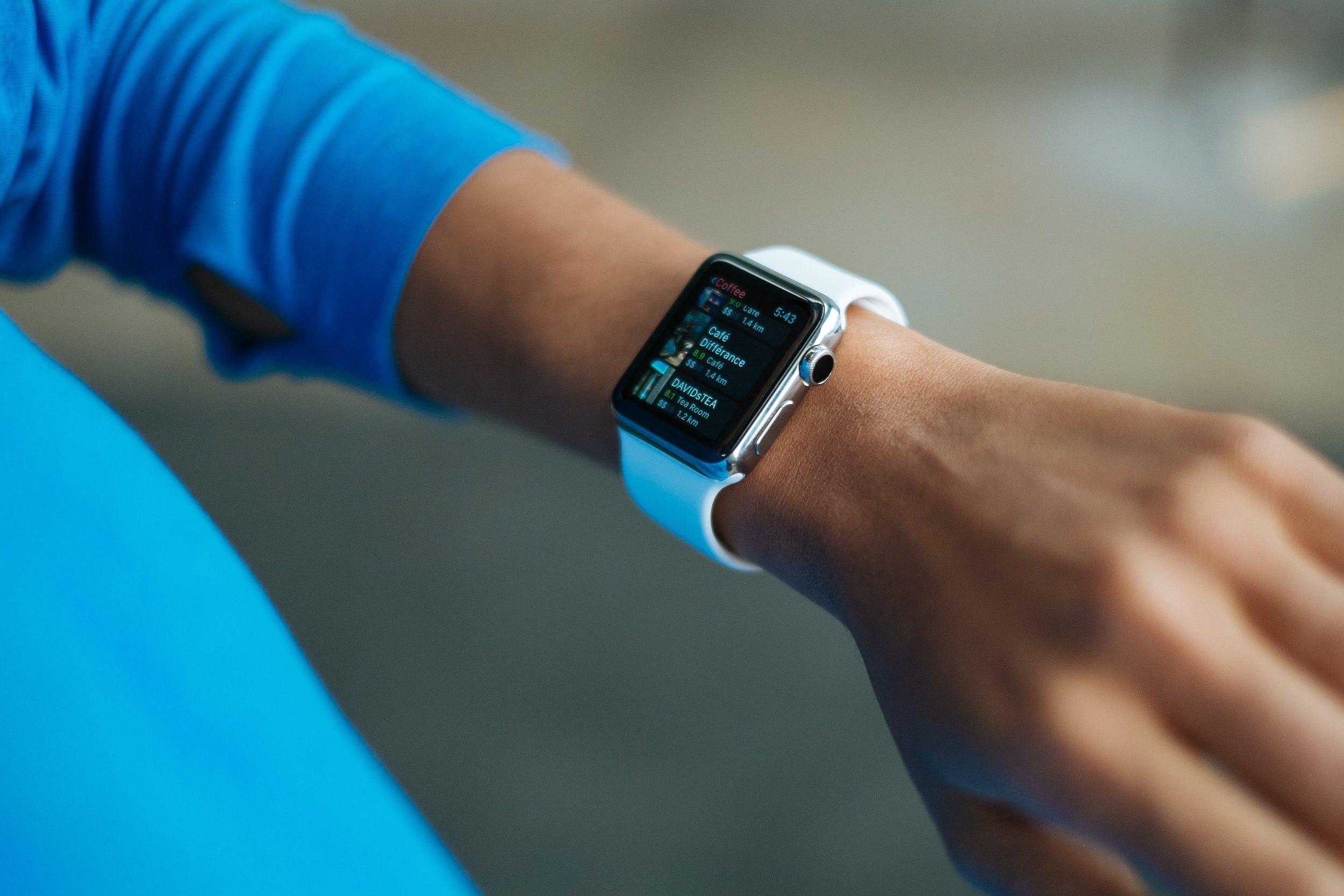
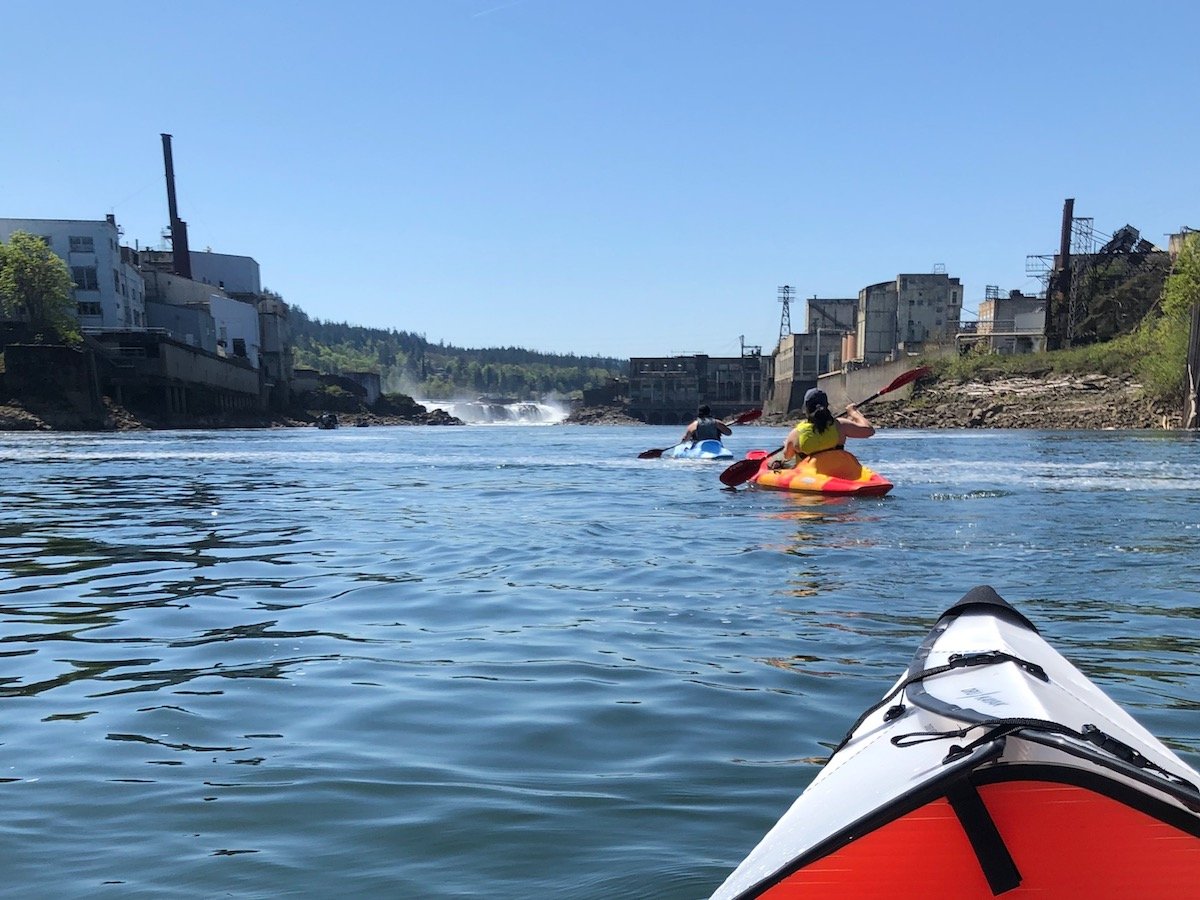
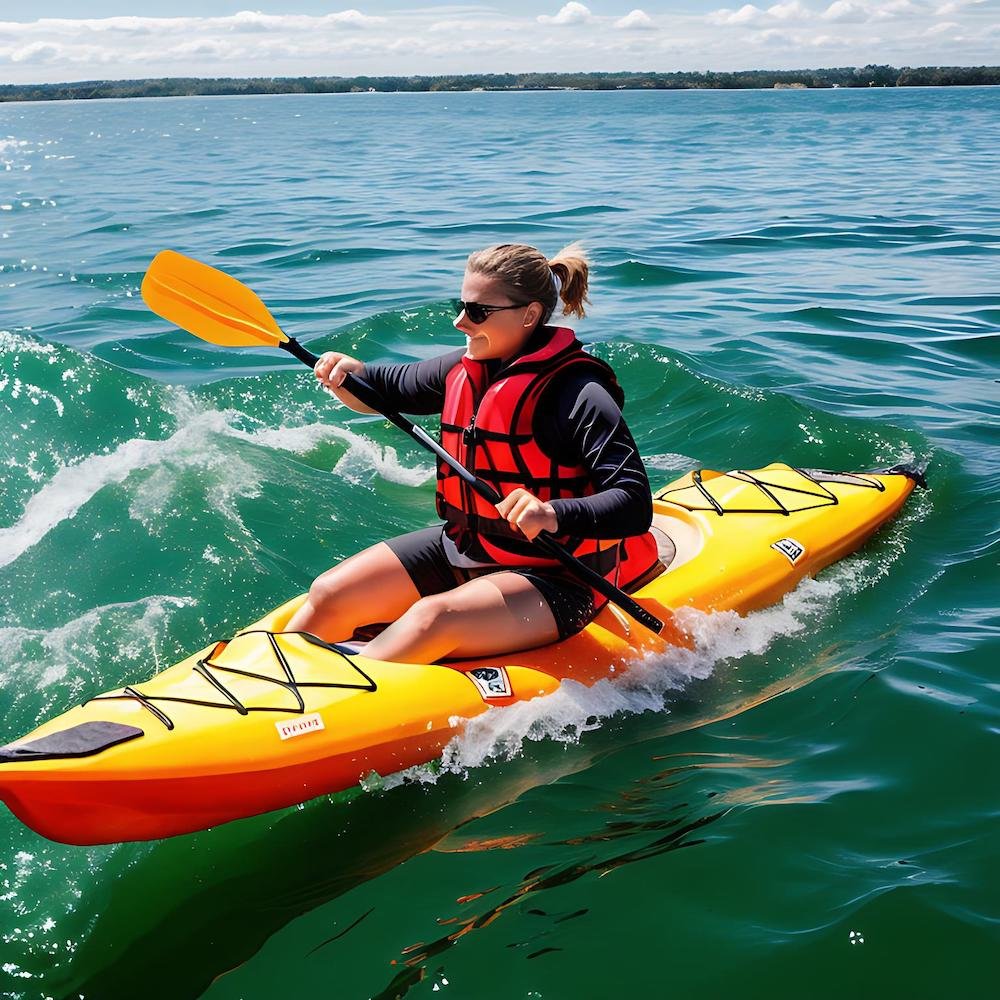



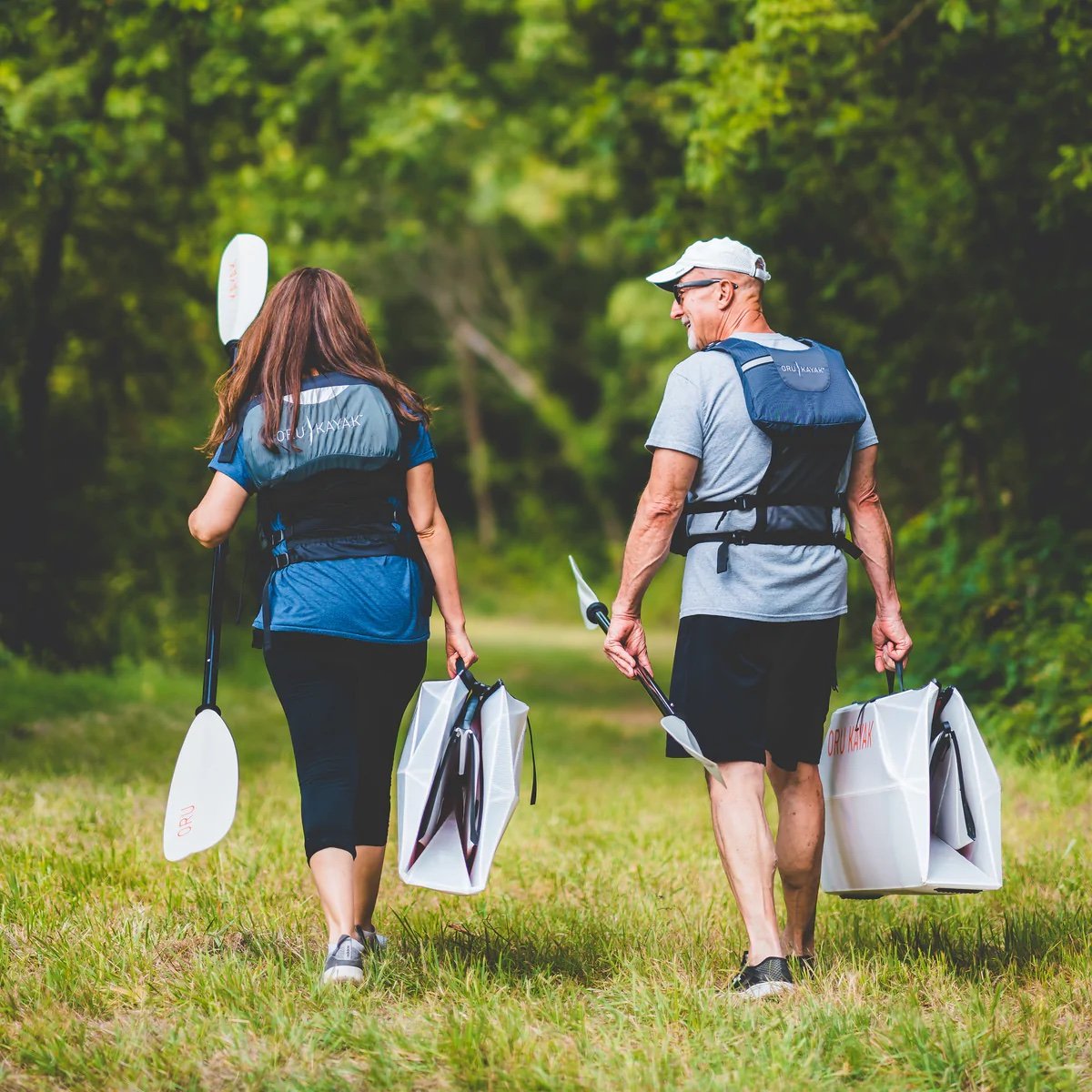
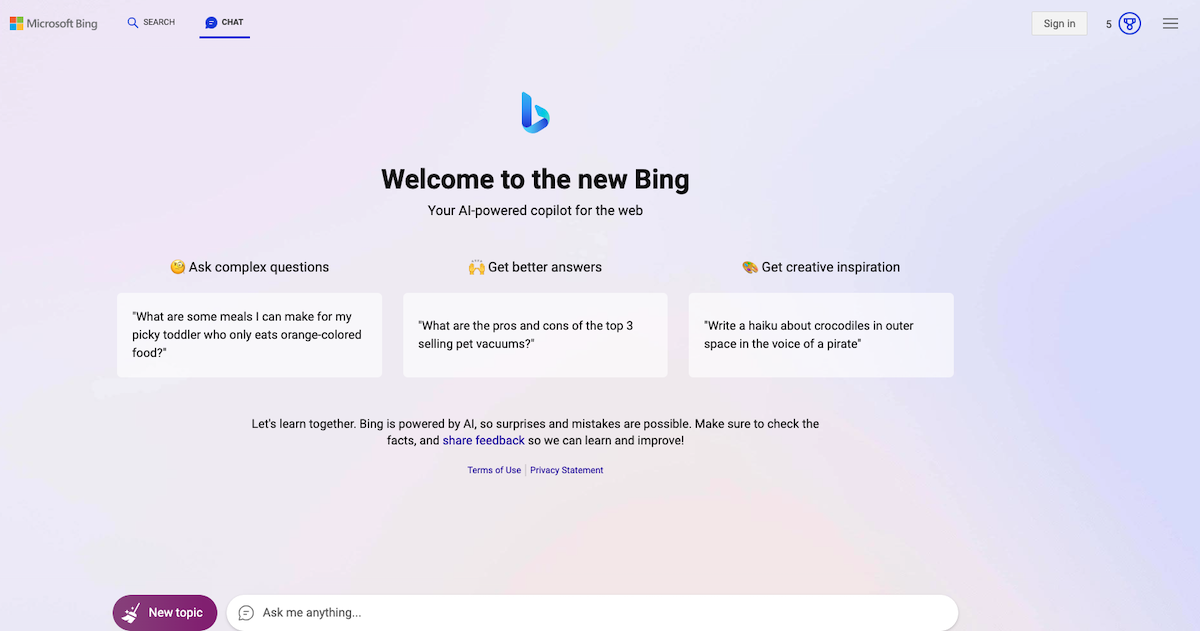




![Floating home cabin for rent [REVIEW]](https://images.squarespace-cdn.com/content/v1/62c5c6be9225615a8d0231a9/5288183e-d43e-418c-9fa1-095bc59b4e3f/FloatingHome-Rental-Oregon-OruInlet-Kayaking-FlatwaterKayakClub.jpeg)
Paddling across the glacier-clear waters of Eastern Oregon in a clear-bottom kayak under a sky full of stars is an unforgettable adventure.